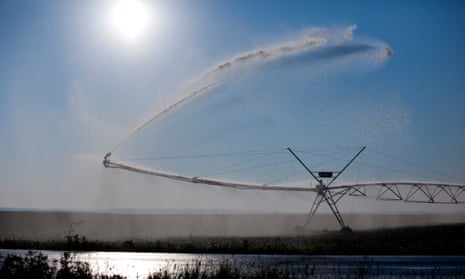1 “Ag-tech” isn’t new
Satellite-controlled cows and underwater lettuce pods are recent examples of technology use in agriculture, but farmers have been using ag-tech in different forms for thousands of years.
“Whether it’s the initial metal hoe and ox plough, manually dug dykes in Mali’s [Ségou Region], or computerised, drip irrigation in California’s almond farms, technology has always been a key driver of agriculture. This isn’t new,” said Chris Arsenault, food security correspondent for Thomson Reuters Foundation.
2 The mobile phone is a powerful tool It’s not all about drones, sensors and robot workers. What makes technology valuable for farmers is ease of use. For smallholder farmers in the developing world in particular, readily available tools such as mobile phones can improve communication and access to information.
“I have seen simple text messaging services ... being successfully used to raise yields and target inputs in Africa. It does not have to be the most complex of technology or sensors that help,” said Clive Blacker, director of Precision Decisions.
Arsenault agrees and adds that pricing data that can be easily accessed through a basic mobile phone, can improve life significantly for many of the world’s smallholders.
3 Farmers must be in control
If success is integrating technologies that work well for the farmer, then the farmer must be in control of the innovation. “The best examples tend to be where innovation is ‘owned’ and driven by the beneficiaries, or folk who can argue their case,” said Tom MacMillan, director of innovation at the Soil Association.
Having advisers on the ground who are familiar with the language and culture of the farming communities they work in is crucial as well. Uptake of new technologies will be low if farmers don’t trust those who are advocating for them.
4 Make farming sexy to attract young people
Increasing urbanisation means young people today are less interested in farming than in the past. Hilary Sutcliffe, director of Matter, said young people can be attracted if the job is framed properly: “When it is positioned that they ... are agri-businessmen and women, they are much more interested. Education on new techniques, accountancy, marketing and the use of innovative technologies makes it much much more interesting to them and technologies of all types play a huge part in making farming sexy.”
5 “Big ag” doesn’t have to be the enemy
There has been some concern that productivity-first, top-down tech is being imposed on farmers by agricultural multinationals. Some worry that this type of model threatens traditional and local skills and methods, endangering a sustainable food future. “Not all big ag solutions are bad, just as not all of them are good,” said Sutcliffe. Blacker added: “There is not one company that has all the answers and more and more of these giants are looking to collaborate and open up data and data sharing.”
6 We need to find the commercial sweet spot
“The driver for most tech development in food and farming is commercial, so only sometimes aligns with the public interest in food security,” said MacMillan.
However, tools that can help both sustainability and profitability are being developed. The Irish Food Board, for example, has a carbon navigator tool that gives farmers individualised feedback to help drive improvements and efficiency on their farms, said Andrew Mullins, technical manager for Origin Green, the organisation’s sustainability certification programme.
Jayne Brookman, who leads the food team at Knowledge Transfer Network, agreed that a commercial driver can be a useful focal point for researchers, industry and technologists to work on together.
7 We need a mixture of hi- and low-tech solutions
Subsistence farming and the needs of smallholder farmers for accessible, low-tech solutions dominated the conversation but Sutcliffe pointed out that medium and large farms need hi-tech solutions to help them compete in world markets. But access is uneven, she said: “Some of the very hi-tech solutions need to be made accessible and be allowed to compete on equal footings”.
There is hope, she said, if people “with the money and the expertise are connected with the realities of farming then very exciting things can happen both at a small and large scale”.

Comments (…)
Sign in or create your Guardian account to join the discussion